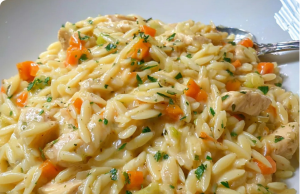Canned tuna is a faithful friend in many kitchens—quick to open, affordable, and quietly nourishing. On busy days, it’s the humble hero that fills lunchboxes, tops salads, and stretches meals with grace. But like any good friend, it thrives best when we understand its nature—not as a daily staple, but as a partner in a varied, gentle rhythm of eating.
Let’s walk through what happens when tuna becomes a daily habit—not to frighten, but to honor your body’s quiet wisdom.
The Gifts It Brings
✓ Nourishing protein: A single 3.5-oz serving offers 25g of lean protein—nearly half your day’s need. It mends muscle, strengthens immunity, and keeps your cells humming. Perfect after gardening, walking, or caring for little ones.
✓ Heart and mind support: Tuna’s omega-3s are like a soft rain on dry fields—cooling inflammation, easing heart strain, and helping thoughts flow clear.
✓ Quiet nourishment: Vitamin D (for strong bones), B12 (for steady energy), and selenium (a gentle guardian against wear) all live in that simple can.
“It’s no wonder we reach for it,” says one home cook. “On tired days, it feels like a warm hand on my shoulder.”
The Gentle Truths to Tend
But wisdom whispers: variety is the soul of nourishment. When tuna becomes a daily companion, three quiet considerations arise:
🔸 Mercury’s slow dance:
Tuna—especially albacore—absorbs mercury from the sea. A little is harmless; too much over time can cloud thinking and weary nerves. Especially for little ones still growing.
→ The kind way: The FDA suggests 2–3 servings weekly—never more. Let cod, salmon, or sardines take turns in your bowl.
🔸 Salt’s quiet weight:
Brine-packed tuna can hold a day’s worth of sodium in one can—stiffening arteries, whispering stress to the heart.
→ The kind way: Choose “water-packed, low-sodium” on the label. Rinse it gently under cool water before using.
🔸 Cans and care:
Some can linings hold BPA—a shadow that may dim your body’s quiet signals.
→ The kind way: Seek “BPA-free” brands (like Wild Planet or Safe Catch). Or buy tuna in glass jars or pouches when you can.
A Simple Path to Balance
You don’t need to give up tuna. You simply need to breathe with it:
- Rotate your protein friends: Let beans, eggs, chicken, and lentils share the table.
- Choose wisely: Water-packed, low-sodium, BPA-free.
- Honor the rhythm: 2–3 cans a week—not every day.
- Listen to your body: Does your mind feel clear? Your energy steady? Let that guide you.
“I used to eat tuna daily,” shares a Midwest grandmother. “Now I buy one can a week. I stretch it with white beans and fresh herbs. My blood pressure thanked me—and my grandbabies still love my ‘tuna surprise’ sandwiches.”
The Quiet Truth at the Heart
Canned tuna is a blessing—a pantry anchor when life whirls. But true nourishment isn’t found in repetition. It’s found in rotation: the earth’s rhythm of seasons, the wisdom of varied foods, the gentle art of listening to what your body whispers when you slow down.
So keep your cans. Open them with gratitude.
But let other voices join the table too—
the chickpea’s earthy hum, the egg’s golden warmth, the lentil’s quiet strength.
In that balance, you’ll find more than health.
You’ll find peace.










